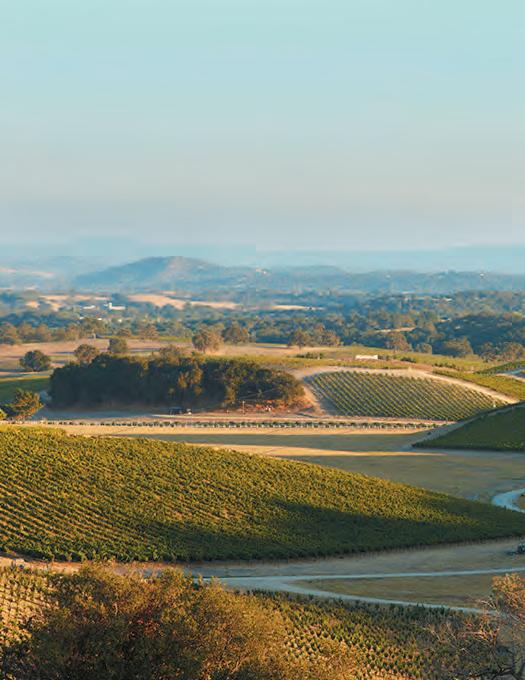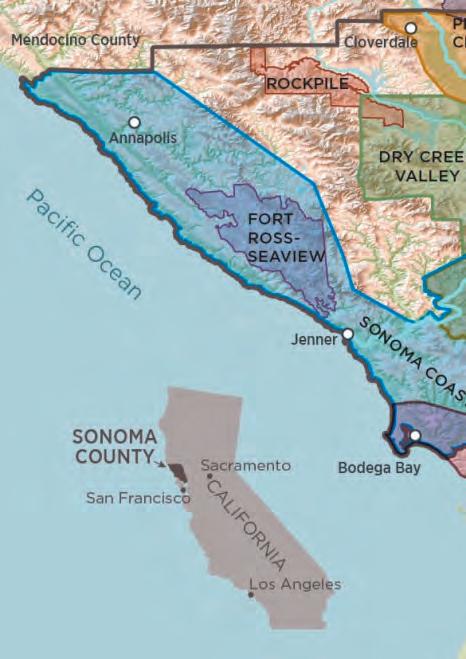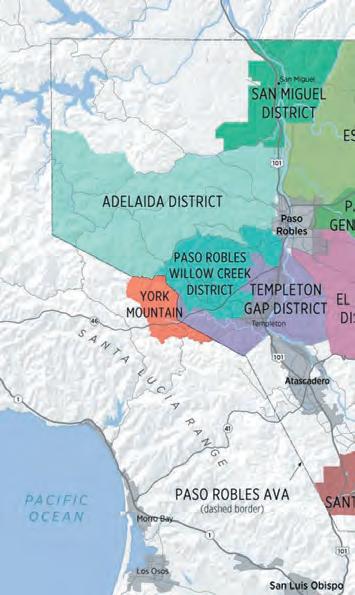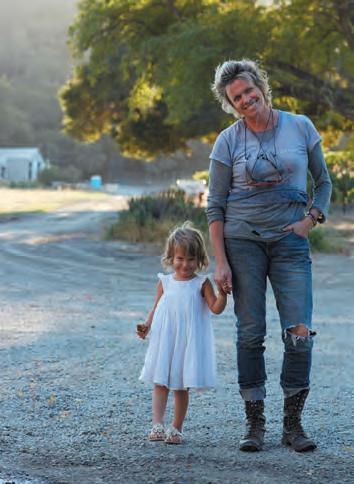
3 minute read
Agriculture
PASO ROBLES VS. SONOMA:
Comparing Wine Country
by Robert Walker
Paso Robles triggers vivid memories of family, adventure, and diversity of place. When people ask me to give them the insider’s view into Paso Robles, I always start with saying, imagine what happens when you mix together a bunch of surfers, ranchers, and farmers, with a dash of college town lifestyle. Imagine a place where you can have large open spaces, mountains, beaches, forests, and a rugged coastline. Imagine a place where there’s space to move around that’s not overbuilt, overcrowded, and yet has the amenities that command the respect of serious travelers. It’s one of the bestkept secrets in California, but word has gotten out. Then after they visit, Paso Robles and the larger Central Coast becomes a revelation.
I’ve seen many visitors jump into the Paso Robles scene with a short weekend trip, usually to learn more about the wineries and vineyards in the area, pulled there by the strong critical acclaim that the vintners receive. Others are drawn in by the coastline, beach towns, and attractions such as Hearst Castle. Some get their first taste via the college roadshow, as they shuttle their college-bound high schooler to San Luis Obispo to visit Cal Poly State University. However the path to Paso Robles, the rewards are appreciated.
I personally draw a lot of parallels between Paso Robles and Sonoma County. I grew up on the Central Coast yet have lived in Sonoma County for the last ten years. Working day-to-day in the wine industry, supporting both Paso Robles and Sonoma County, has afforded an interesting perspective into both regions. Paso Robles and Sonoma County have a lot to offer, as do other wine-focused regions in California. In this article, we take a look specifically at Paso Robles vs. Sonoma and how they compare and contrast, each in their own unique way.
Paso Robles vs. Sonoma: Comparing Wine Country
THE REGION AND CLIMATE
The Paso Robles wine region is located in the northern part of San Luis Obispo County, which is roughly equidistant (205 miles) between both the San Francisco Bay Area to the north and the greater Los Angeles area to the south. The heart of Sonoma County is approximately 55 miles from San Francisco and 255 miles from Paso Robles. There are 58 counties in California, and in terms of area, San Luis Obispo County is the 17th largest county in California (3,304 sq miles) with a population of 283,000 residents, whereas Sonoma County is smaller in size (1,576 sq miles) but more populous (504,217).
In 2014, the 612,000 acre Paso Robles American Viticulture Area (AVA) was divided into 11 smaller AVAs, comprised of 41,000 acres planted to vineyards. Sonoma County is comprised of 18 AVAs, with more than 62,000 acres planted to vineyard. Both regions are blessed by the natural landscape that creates diversity, with wide ranges of ocean influence, rainfall, elevation, and soil types. Average annual temperatures are similar for both areas, with Paso Robles at 59.7 degrees Fahrenheit and Sonoma (Santa Rosa) at 59.1. However, Paso Robles averages a slightly higher average high as well as a slightly lower average low in comparison, whereas Sonoma County averages two and a half times the rainfall of Paso Robles. These temperature and rainfall differences impact the types of grapes grown and the general profiles of the wines from each area. It is important to note that both regions have conjunctive labeling laws that help preserve the brands, Paso Robles and Sonoma, while still letting the lesser AVAs stand out on their own.
WINERIES AND WINE PRODUCTION
Paso Robles and Sonoma County are quite similar in that they are densely populated with small production family-owned wineries, many of which have had multi-generational histories. Paso Robles has over 200 wineries, with the majority within a short driving distance of downtown Paso Robles. Over 85% of the wineries in Paso Robles make less than 10,000 cases. Sonoma County has over 500 wineries, but different than Paso Robles in that they are more geographically separated. No matter the location, these family businesses share common opportunities as well as challenges and work closely with each other to promote the values of each region. Whether it’s a helping hand at harvest or sharing resources at the end of an all-night pick, these tightly knit vintner communities showcase values unseen in most industries, with the ultimate desire to share the result of their hard work.












